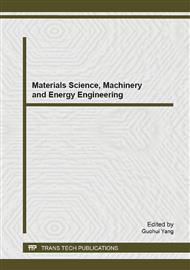p.500
p.506
p.510
p.514
p.520
p.526
p.531
p.536
p.541
An Improved Design Method for Automotive Powertrain Rubber Mounts
Abstract:
The objective of the powertrain mount design is to find the geometry which meets the desired stiffness and damping requirements. For the conventional rubber mount, which is composed of a rubber element bonded into a metal bracket, its stiffness can be predicted using FEA but the damping is evaluated by physical testing. This paper introduces a design method at which the damping coefficient of the rubber mount is to be predicted theoretically based on the assumption that the phase angle for a rubber compound is constant. Absence of physical test in this proposed new design process, the development time from concept to production is reduced.
Info:
Periodical:
Pages:
520-525
Citation:
Online since:
December 2013
Authors:
Keywords:
Price:
Сopyright:
© 2014 Trans Tech Publications Ltd. All Rights Reserved
Share:
Citation:


